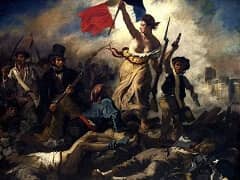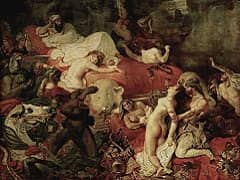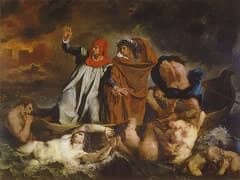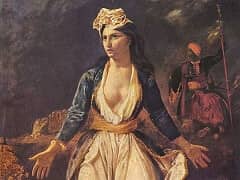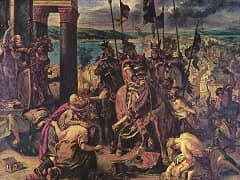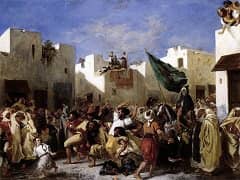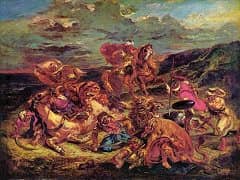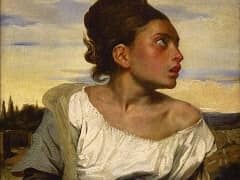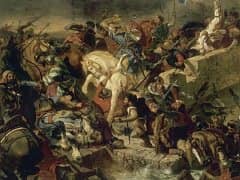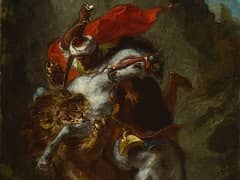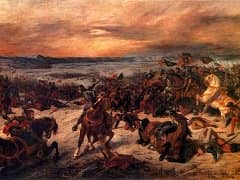The Massacre at Chios by Eugene Delacroix
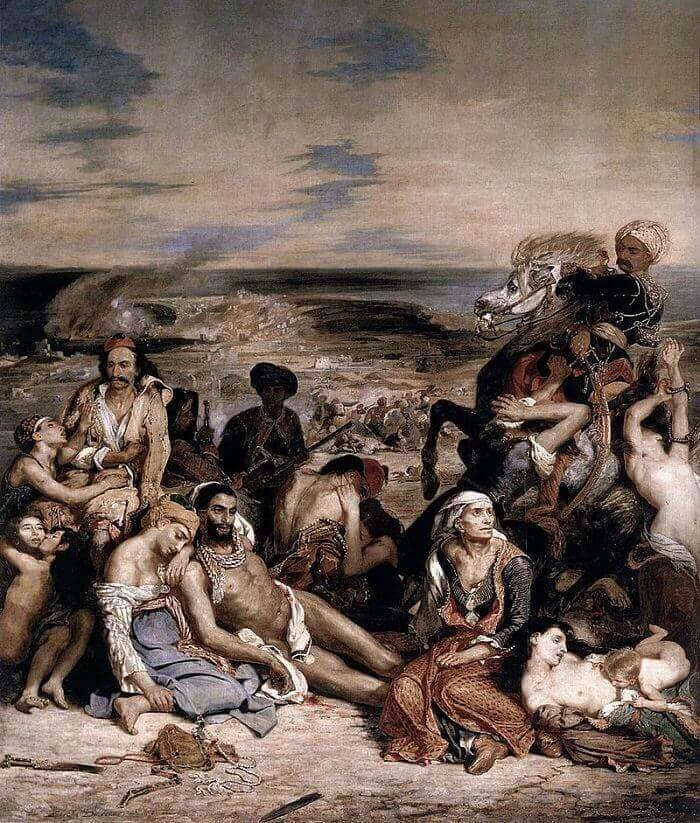
As early as September 15, 1821, Delacroix had thought of using the desperate revolt of the Greeks against the Turks, begun in 1820, as the subject for a painting, and had confided this intention to his friend Raymond Soulier: "I plan to do for the next Salon a picture for which I will take the subject from the recent wars between the Turks and Greeks. I believe that, in the present circumstances, if there is any quality in the execution of the work, it will be a way to distinguish myself". However, the artist postponed the execution of his project and in the interim, in April, 1822, there were the terrible massacres on the island of Chios, in which twenty thousand people died. Delacroix perhaps found his inspiration in the facts related in the Memoires of Colonel Voutier, a French officer in the Greek forces, with whom he was in contact.
With this canvas, Delacroix takes his place as the leader of the Romantic school of painting. His palette has become considerably lighter since The Barque of Dante. He has acquired a freer manner, in which one can note the use of hatchings and a deeper knowledge of the reflection of light.
In the luminous landscape, scorched with sun, which reveals an amazing sense of spatial values, the groups of dying people are reminiscent of those in the Pest Hospital at Jaffa of Gros, whose disapproval we have nevertheless already noted, while the Turkish officer carrying off a woman is close to Gericault's Officer of the Chasseurs of the Guard.
The lyricism of the colors combines with the Baroque plasticity of the forms to make us forget how easily the subject might have been limited to mere anecdote. As Baudelaire wrote in his Art Romantique: "In this work, all is desolation, massacre, and fire; everything bears witness to the eternal and incorrigible barbarism of man. Burnt-out and smoking cities, slaughtered vicitims, raped women, even children stabbed or thrown beneath the feet of horses, frenzied mothers; this whole work, I say, seems like a terrifying hymn composed to celebrate doom and irremediable suffering."

